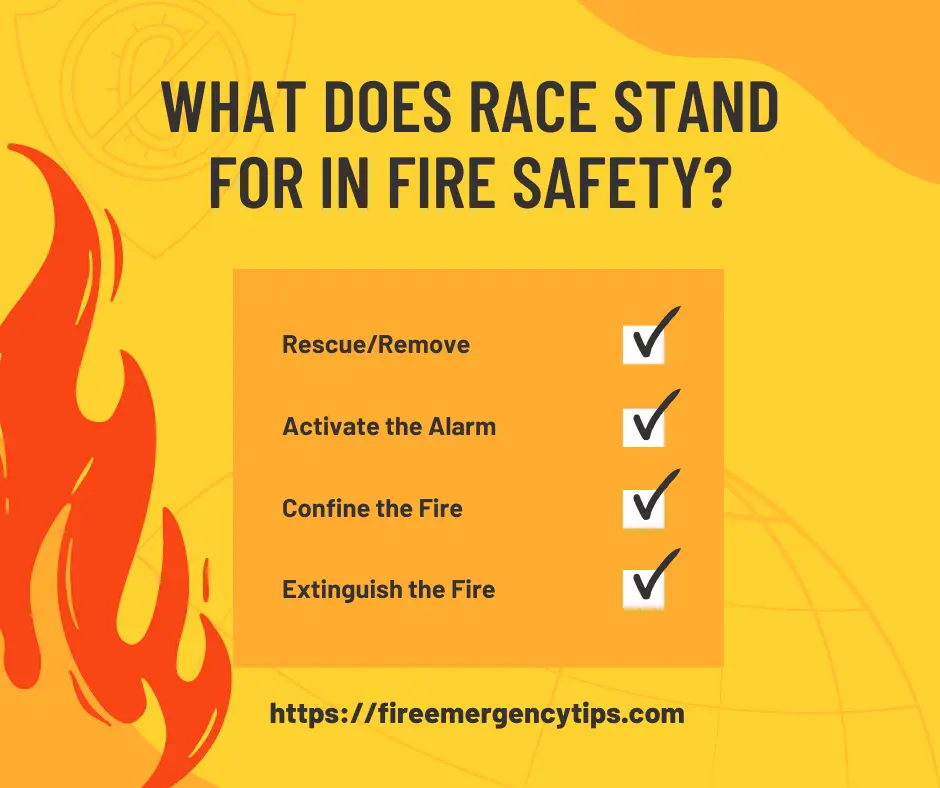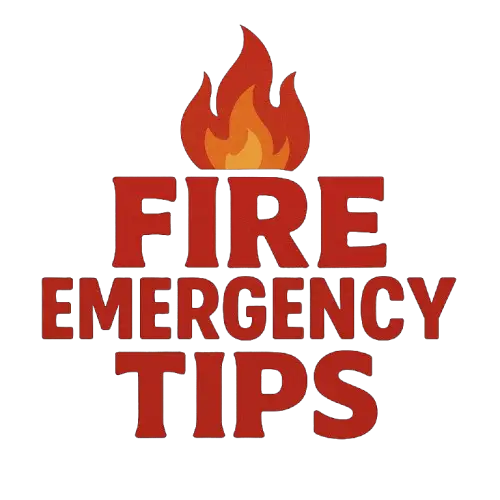
Perhaps you are hearing this acronym “R.A.C.E” for the first time and wondering what it means. Of course, there are many interpretations of this acronym, but when it comes to fire safety, it stands for:
RACE stands for Rescue, Alarm, Contain, and Extinguish. R.A.C.E is an acronym used in fire safety to help people remember the four major steps involved in responding to a fire emergency.
In other words:
RACE is an acronym in fire safety that stands for Rescue, Alarm, Confine, and Extinguish. It is an emergency response plan used to quickly and effectively respond to fires in a safe and organized manner.
So, whichever way you like it, that is what it means. Each letter in that acronym means a response plan towards a fire emergency. I will try to explain each letter, what it means, and everything else that perhaps you need to know.
R – Rescue
A – Alarm
C – Contain
E – Extinguish
It is a method of responding to fires that is used to ensure that the fire is quickly contained and extinguished.
1. Rescue or Remove
This is the first step in any fire safety plan and involves safely evacuating any people from the area. It also includes removing any combustible materials. Therefore, firefighters should a make sure that everyone is out of the building before they start fighting the fire.
Rescue is the most critical step in the race procedure as it involves saving lives. It is essential to have an evacuation plan in place before a fire emergency occurs. The evacuation plan should be well-communicated to all individuals within the building, and regular fire drills should be conducted to ensure everyone is aware of the evacuation procedures.
During a fire emergency, it is essential to stay calm and follow the evacuation plan. Individuals should be familiar with the location of fire exits and follow the designated evacuation routes.
If a person is trapped, they should attempt to call for help and stay low to the ground to avoid inhaling smoke. Firefighters are trained to perform rescue operations, and individuals should wait for their assistance rather than attempting to rescue themselves.

2. Activate the Alarm
Once the people are out of the building, the next step is to activate the fire alarm. This will alert the local fire department and other emergency personnel to respond to the fire.
In some cases, activating the alarm also triggers automatic sprinklers or fire-suppression systems. This will also alert other people in the building to the danger and triggers the fire suppression system.
The alarm should be raised as soon as possible to ensure everyone has sufficient time to evacuate the building. Fire alarms should be installed in all buildings and tested regularly to ensure they are in good working condition.
The alarm should be raised through the building’s fire alarm system, which should be activated by pulling the fire alarm lever. If there is no fire alarm system in place, individuals should shout “fire” and inform others of the emergency. The alarm should be raised even if the fire appears to be small, as it can quickly spread and become unmanageable.

3. Confine the Fire
This involves containing the fire by closing doors and windows and blocking off air supply to the fire. When trying to confine the fire, firefighters should be aware of the potential for flashover and backdraft.
This is when the entire room is filled with hot gases, which can cause an explosion when exposed to oxygen. It is therefore necessary for firefighters to wear the proper protective clothing and use special techniques when trying to contain the fire.
It is essential to contain the fire as quickly as possible to prevent it from causing more damage. Fire doors should be closed to prevent the fire from spreading, and any flammable materials should be removed from the area.
Fire extinguishers should be used to contain small fires. However, it is important to remember that extinguishers should only be used by individuals who are trained in their use. Using an extinguisher incorrectly can be dangerous and can worsen the fire. Firefighters should be called to contain large fires, and individuals should evacuate the building.

4. Extinguish the Fire
This is the last stage of the Race acronym in a fire safety plan and involves using the appropriate fire extinguishers to put out the fire.
Once the fire is contained, firefighters will use the appropriate fire-extinguishing tools to put out the blaze. This may include water, foam, dry chemical, or other extinguishing agents.
It is important to remember that fires can reignite even after they appear to be extinguished. Firefighters will ensure that the fire is completely out before leaving the scene.

FAQs
What does the R stand for in the race acronym for fire safety?
In fire safety, R stands for Rescue. This is part of the acronym RACE, which stands for Rescue, Alarm, Contain, and Extinguish. It is a step that is important when responding to a fire emergency as it ensures that anyone in danger is safely evacuated.
When you discover a fire the C in the acronym RACE stands for?
Confine. This is the third step that ensures that the fire doesn’t spread and cause more damage. It is important to make sure that the fire is completely shut off from any source of oxygen and fuel.
In conclusion
RACE is a useful acronym to remember the four steps of firefighting: Rescue, Alarm, Contain, and Extinguish. Remembering these steps can help keep you safe in the event of a fire. Therefore, you should take the time to learn them and be prepared for any situation in case of a fire emergency.
Also Read:

